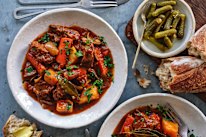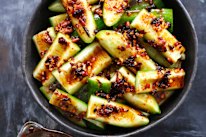How to master Adam Liaw’s Australian bolognese
This super spaghetti recipe is the first in a weekly series by Adam Liaw: The 10 dishes you need to master.
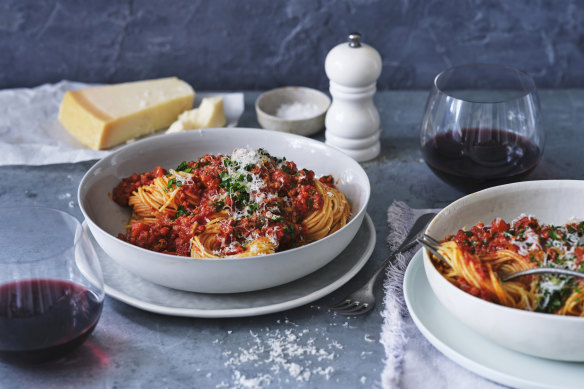
If there was any doubt over what Australia’s national dish is, it was dispelled at the start of the pandemic, when Australians stripped supermarkets of the ingredients to make good ol’ spag bol (and toilet paper, but let’s not talk about that).
Let’s stop arguing over how an “authentic” ragu alla bolognese is made in Bologna. Australian bolognese may have been inspired by the northern Italian city, but the way it’s made around this country today is entirely our own.
Here’s how to make it the best version we can in Australia today.
Ingredients
2 tbsp olive oil
2 large brown onions, cut into 1cm cubes
2 celery stalks, cut into 1cm cubes
2 carrots, cut into 1cm cubes
500g chopped vegetables and offcuts (broccoli stems, mushrooms, zucchini, eggplant etc.), optional
4 garlic cloves, roughly chopped
500g beef mince
500g pork mince
2 tbsp tomato paste
½ cup red wine
1 tsp dried oregano
2 bay leaves
1.4kg tomato passata
2 tbsp tomato sauce (ketchup)
1 tsp salt, plus extra to season
500g spaghetti
25g butter, optional
finely chopped parsley, to serve
freshly grated parmesan, to serve
Method
Step 1
Heat a large heavy casserole over low-medium heat and add the oil. Fry the celery, carrot, onion, other vegetables (if using) and garlic for about 15 minutes until fragrant and softened. Add the minces and fry until lightly browned.
Step 2
Add the tomato paste and mix well. Add the wine and bring to a simmer. Simmer for 2 minutes, then add oregano, bay leaves, passata, tomato sauce, salt and about a cup of water and bring to a simmer. Simmer on low heat for 2.5 hours, stirring occasionally and topping up with a little water if the mixture is getting too dry. Taste and adjust seasoning.
Step 3
Boil the pasta in plenty of salted water according to packet directions but start checking it about 2 minutes before the time recommended on the packet.
Step 4
When the pasta is nearly finished cooking, heat a very large frying pan over medium heat and add about a third to half of the bolognese sauce (you can always add more later). Transfer the pasta to the pan with tongs, and ladle in about ¼–½ a cup of the pasta water. Stir or toss to combine with the sauce. This also allows the pasta to absorb the flavour of the sauce. Add a little more bolognese sauce, if you like, as well as the butter (if using) and mix to combine. Serve with a little shredded parsley and a lot of grated parmesan.
Masterclass
The base
The base of a good braise or stew is important to its final flavour. Whether you want to call it a mirepoix, sofrito or simply “chopped vegies” is up to you. Onion, carrot and celery are the most common starting points, providing sweetness and, in the case of celery, a little pepperiness. For an Australian bolognese, it’s common to add other vegetables as well.
Using low to medium heat, fry the base vegies for as long as you can. I aim for about 15 minutes, but some cook it for 30 minutes or even longer. Add enough oil to stop it from catching on the base of the pot, but don’t overdo it. The mince will render its oil as it cooks and if you add too much oil at the start, you’ll be met with an overly oily bolognese at the end.
Timing
Both long and short timing are important for an Australian bolognese. The magic of bolognese sauce happens in the third hour of cooking, and I firmly agree. You can, of course, get by with a shorter cooking time, but a long braise turns the collagen of connective tissue in the meat to gelatine, giving your bolognese a rich mouthfeel. For this reason I also prefer to buy cheaper mince for bolognese. Expensive mince is leaner and often contains less connective tissue than cheaper mince, meaning that with long cooking they will become grainy and dry, rather than moist and rich.
But on the short side, the texture of your cooked pasta will make or break the dish. Overcooked pasta is flaccid, soggy and lacks both flavour and texture.
For dried pasta I set a timer for 2 minutes shorter than the time printed on the packet, and start testing from then. I want the pasta to be al dente – firm to the tooth, but not crunchy. Then I can transfer it to a pan to finish with the mantecatura.
This Italian word describes the process of mixing ingredients for pasta or risotto to create an emulsified sauce. I think this is the key to all good pasta dishes, and it’s the reason the delicious pasta you get in most restaurants is mixed together with its sauce, rather than served as a plate of boiled noodles with a sauce dolloped on top.
The three key ingredients for a mantecatura are al dente pasta, a little pasta water and the sauce ingredients. Mixing these three together for a minute or two allows the pasta to absorb the flavour of the sauce, and for the oils to emulsify with the starchy water, giving the dish a richer, creamier texture. I always add a little extra oil (or butter) during this process.
Continue this series
22 recipes that start with a jar of tomato passataUp next
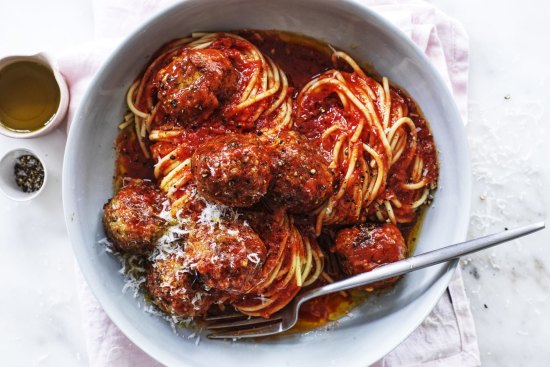
Meatball spaghetti
The 'meatballs' in this tomato-based pasta are a mixture of meat, tofu and vegetables.
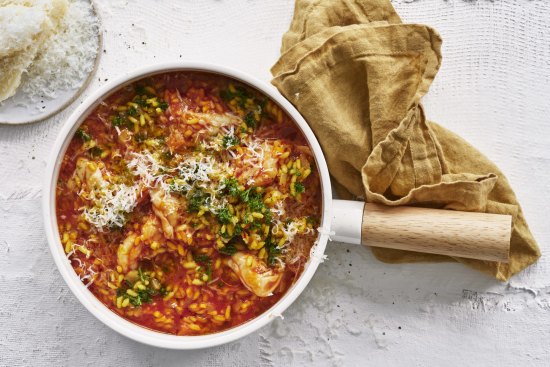
Saffron, tomato and prawn risotto
I like to use chicken stock for a risotto such as this one but you could easily use seafood stock, or even a homemade prawn stock, if you prefer.
Previous
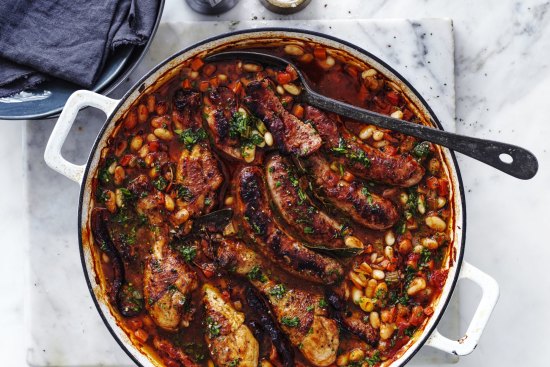
Chicken and sausage cassoulet
Cassoulet is one of my favourite dishes. This simple home-style version is closer to baked beans and sausages than fine French fare, but I'm okay with that. If using dried beans you’ll need to start soaking them the night before.
The best recipes from Australia's leading chefs straight to your inbox.
Sign upMore:
From our partners
Similar Recipes
More by Adam Liaw
Original URL: https://www.watoday.com.au/goodfood/recipes/how-to-master-adam-liaw-s-australian-bolognese-20230317-p5ct3o.html







